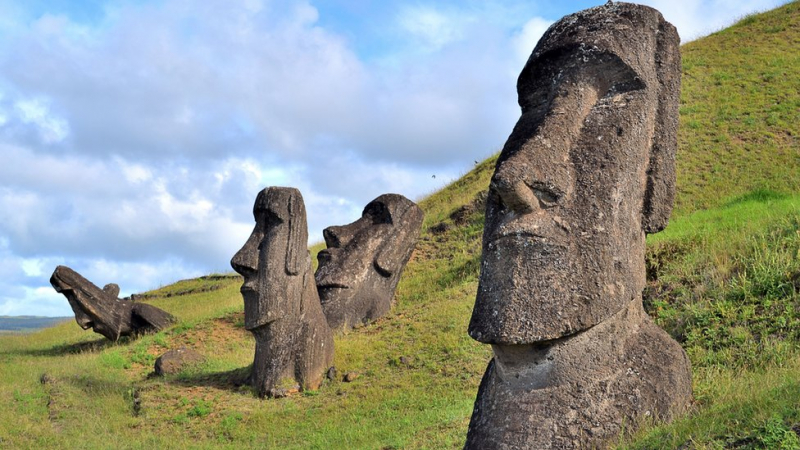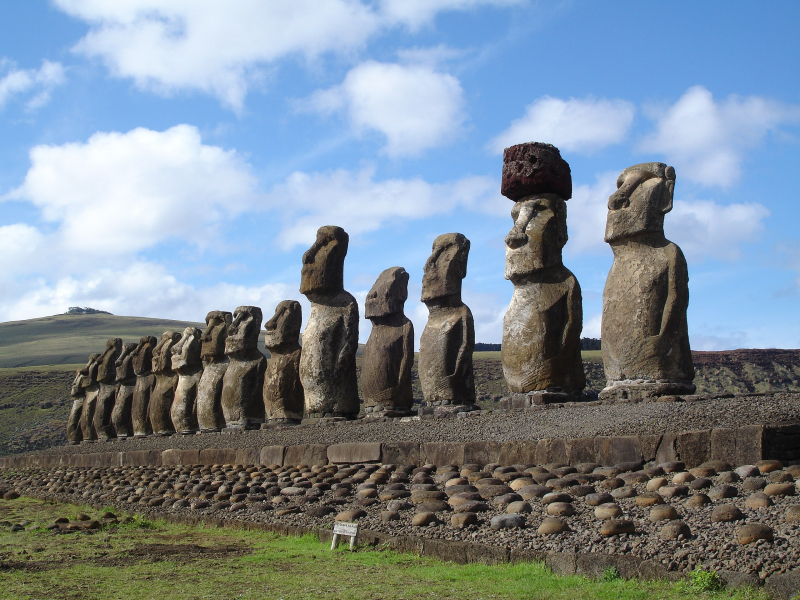Easter Island
Easter Island (Rapa Nui) in Chile is a lonely island with a mysterious past, surrounded by 4,000 kilometers of water. Easter Island, discovered by Dutch explorers in 1722 and called by the fact that the explorers arrived on Easter Sunday, is estimated to have been inhabited since 700 AD, possibly as early as the fourth century AD. This, like the origins of the Easter Islanders, is still a point of contention. The majority of scientists today assume that the original settlers were Polynesians.
Easter Island's nearly 900 head-shaped statues, known as moai, are perhaps its most iconic feature. The moai, often known as the "living faces of our ancestors," are massive stone statues that are said to have been created to defend the islanders around 1000AD. The moai were not standing when they were discovered, but several have since been raised to their full height.
The mysterious nature of Easter Island is mostly attributable to the island's massive population decline throughout time. Easter Island had a population of roughly 12,000 people when it was discovered, but by the late 19th century, this had dropped to around 110 individuals due to a mixture of emigration, the entrance of new European diseases, and slave raids on the island. Chile annexed Easter Island in 1888. Today, the population has rebounded greatly, with the population fluctuating between 7000 and 8000 people at any given time.
Evidence implies that, prior to the advent of the explorers, Easter Island experienced civil conflict and possibly cannibalism in the seventeenth century. The moai were pulled down during this period. When the Dutch came, however, the people of Easter Island were reported to be healthy and at peace. It wasn't until later that sickness and natural disasters struck.
Easter Island is now part of the Rapa Nui National Park, which is a UNESCO World Heritage Site. Easter Island is famously distant - it's a dot in the midst of the South Pacific, 3700 kilometers west of Chile – but many people travel there each year to see this enigmatic speck in the ocean. Surely in the list of the most beautiful historical sites in Chile, Easter Island is indispensable. Once there, you can explore a variety of sites, including the moai heads and the quarry at the Rano Raraku volcano.
Location: Isla de Pascua, Chile







